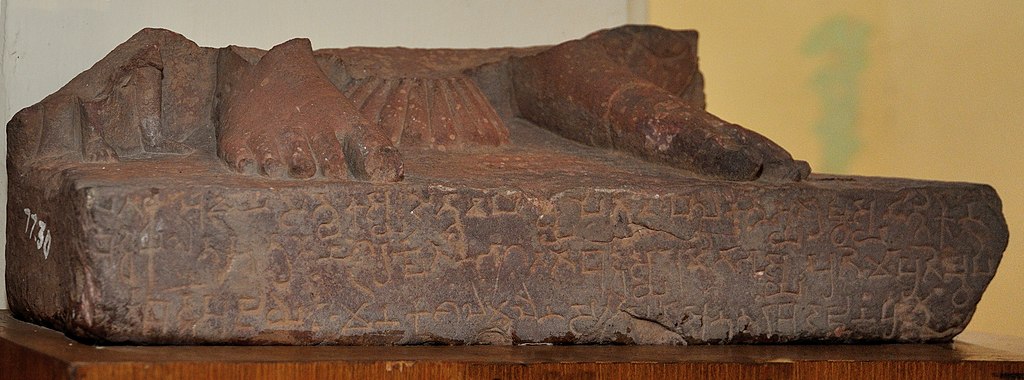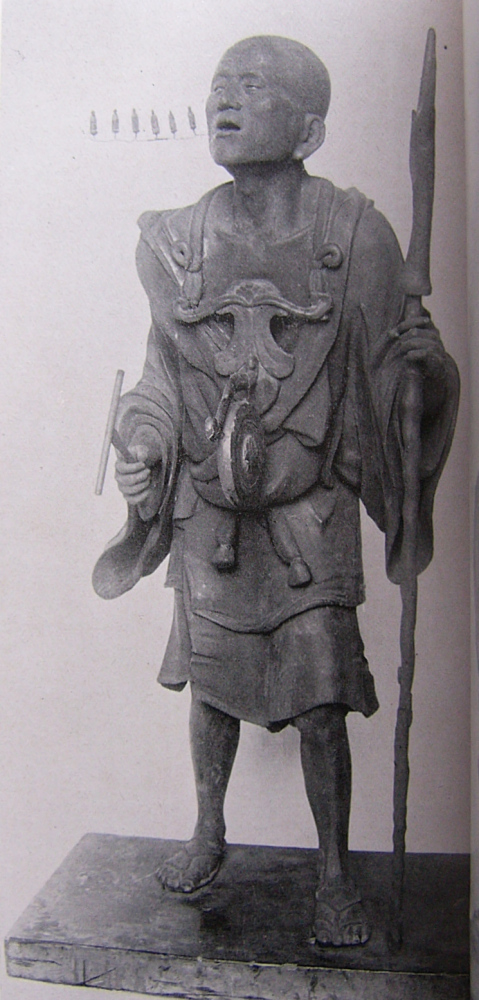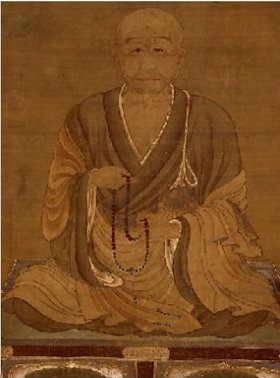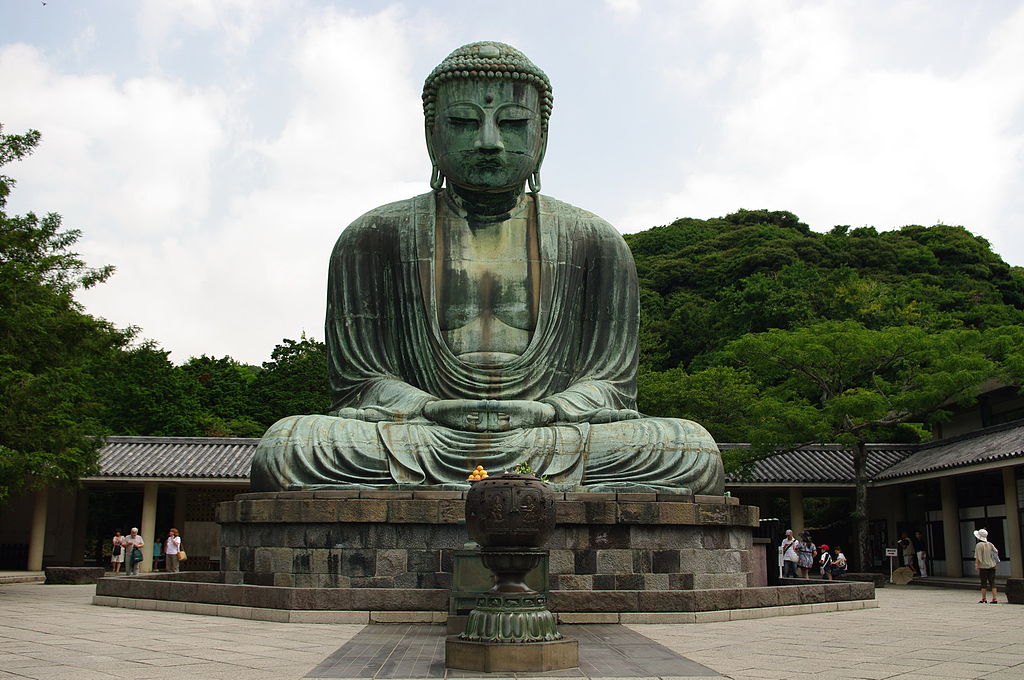Historical Context – The Kamakura Period
The Heian period ended in the 12th century when (actual) political power passed from the emperor in Kyoto to the shogun in Kamakura, a decentering process that brought about a radical – and often painful – change in the lives of ordinary Japanese people prompting a surge of creativity marked by the development of new religious movements, namely, the Pure Land, Zen and Nichiren schools. These new schools can be seen as the third stage of Japanese Buddhism following its formal introduction from Korea and China in the 6th century that led to the foundation of the Nara schools, and the emergence in the 9th century of culturally Japanese Buddhist schools, when Saicho and Kukai respectively founded the Tendai and the Shingon schools. While Buddhist practice had been restricted to the educated members of the aristocracy at the Heian court in the Nara period, Saicho and Kukai had built their temples away from the capital, and tried to reach out to ordinary Japanese. This opening up of the practice to people who, by and large, were illiterate, intensified in the Kamakura period, as socio-political conditions deteriorated with the rise of the samurai class.
Kasulis explains that, at the end of Heian period, the aristocrats spent increasingly long periods at the court, entrusting the management of their provincial estates to stewards. “Those stewards formed the basis for the later samurai (“those who serve”) or bushi (“military gentry”) class … By the early 12th century, the court aristocrats had become so politically effete that the newly risen samurai started seizing the estates and then fighting among themselves for territory. During the Genpei War in 1185 the Minamoto clan destroyed its major competition, the Taira, and 7 years later, Minamoto no Yoritomo (1147-1199) was granted by imperial decree the hereditary title of shogun, the general in charge of governing the country.” The emperor remained on the throne, but a process started whereby his power, based on land, gradually gave way to power based on the military expertise of the specialised class of samurai. Political rivalries tore the country apart. Even Buddhist temples had trained armies. In addition to the wreckage from human violence, the Japanese population had to endure epidemics, famines, fires, typhoons, earthquakes, tsunamis causing unprecedented levels of suffering.
Kasulis writes: “There was little time for, or comfort in, metaphysical speculations. To many people, esoteric Buddhism’s promise of being absorbed into and absorbing the cosmos through the ritualistic empowerment of Dainichi seemed pathetically irrelevant … Instead, the philosophers turned their analyses to the problems of this world, … wondering what failing in humanity had caused such suffering … Rather than Tendai completeness, rather than Kukai’s complex system for understanding everything, the founders of the Kamakura religious movements would stress instead simplicity in both doctrines and praxis. Urgency inculcates focus. Complexity was an intellectual and spiritual luxury the reformers felt they could no longer afford.”
Origins of Pure Land Buddhism
The first Buddhist movement that emerged was the Japanese Pure Land schools founded by Honen (1133-1212) and his disciple Shinran (1173 -1263). Honen founded the Jodo-shu school in 1175. Shinran’s ideas developed so far beyond those of his mentor, that his disciples had to found a new school, the Jodo Shinshu or True Pure Land school, which did not truly flourish until Rennyo, his 8th disciple in the 15th century. Just as the Tendai and Shingon schools had been the Japanese reworking of Indian and Chinese Buddhist teachings, the Japanese Pure Land schools traced their origins to northwestern India around the first century CE.

Dennis Hirota writes: “The concepts of multitudes of celestial buddhas and their buddha-fields throughout the cosmos are already in evidence in the earliest strata of extant texts produced by the Mahayana movement, and sutras expounding distant buddha-fields, such as that of Aksobhya Buddha in the east, are among the first to be translated into Chinese already in the second century CE, with sutras teaching Amida Buddha soon to follow. Thus, sutras teaching methods of achieving liberation from samsaric existence through attaining birth in buddha-fields in other regions of the cosmos—particularly Amida Buddha’s Pure Land—were among the earliest Buddhist scriptures transmitted to China.” The Pure Land tradition then “developed for over a thousand years in China, accumulating an extensive body of scriptural and commentarial writings, before undergoing [a] radical reinterpretation in Japan.”

In Japan, a Pure Land practice based on Amida – the Buddha of Immeasurable Light and Immeasurable Life – first became prominent among ordinary folk. In the 10th century, an itinerant monk who had trained on Mt Hiei, “Kuya or Koya (903-972), had become renowned for his traveling from village to village, doing good deeds and distributing alms, while continuously chanting the nenbutsu.” It can be said that the Pure Land practice came from the bottom, rather than from the top as Tendai and Shingon had come. The challenge, in Japan, as it had been in India and China, was to develop a practice suited to a lay sangha lacking both education and the sort of secure social circumstances that provide time and confidence to embark on a complex spiritual path. The Pure Land teachers and their lineages did meet the challenge: “Taken together, the followers of the various Pure Land sects presently total about sixty percent of the population of the whole country.”
Amidism before Honen and Shinran
The tradition based on the teachings and practices associated with Amida’s Pure Land, Amida (Skt Amitabha) being the Celestial Buddha of Immeasurable Light and Immeasurable Life were originally referred to in Japan as Amidism. First, however, what is a Pure Land in Buddhism?
Thomas Kasulis answers as follows: “Often considered the same as a buddha realm (bukkokudo), in Mahayana Buddhism a pure land (jodo) most broadly means the field of a particular buddha’s or bodhisattva’s spiritual power and activity. More narrowly, it can refer to the specific realm created by such a buddha when taking the bodhisattva vow to assist others … Although people often understand these pure lands to be actual physical heavens separate from this world, they do not have to be so. The same locale can appear or not appear as a pure land, depending on the observer’s state of mind.”
Amida’s Pure Land, known as the Pure Land of Perfect Bliss (Sukhavati), is said to be located to the west, and is therefore sometimes called the Western Paradise. But we could also say that, for the historical Sakyamuni Buddha, the Pure Land was the human world, and in Shingon the Pure Land of Dainichi Buddha is the whole cosmos. In East Asia, however, when a pure land is mentioned, it usually refers to Amida’s Pure Land.
Japanese Pure Land teachings are based on three foundational texts: the Larger Sukhavativyuha Sutra (Larger Sutra of Immeasurable Life), the Shorter Sukhavativyuha Sutra (Amitabha Sutra) and the Amitayurdhyana Sutra (Sutra of Contemplation on the Buddha of Immeasurable Life – or simply the Contemplation Sutra). The first two were composed in India, the Amitabha Sutra being the earliest to mention Amida’s Pure Land as early as year 100, while the third one was composed in China in the 5th century. Amitayu is another name for Amitabha.
Kasulis says that “the Larger Sutra is most important for its account of Amida’s Vow, the gist of its narrative being as follows: The historical Buddha, Shakyamuni, was with his disciples at Vulture Peak when he was asked about the cause for the unusual glow in his face. The Buddha recounted the story of the bodhisattva Hozo (Skt Dharmakara) who had spiritually developed over countless lifetimes to the point of achieving nirvana. Feeling compassion for his fellow human beings, especially for those spiritually unable to reach enlightenment on their own, he paused to survey the variety of already existing pure lands to determine which characteristics would most assist those who could not help themselves.”
“As a result, Hozo vowed to establish a pure land where conditions for Buddhist practice would be so ideal that even those who could not previously succeed in the Buddhist path would now be able to do so. After dying in this world, people would be reborn in his Pure Land, where the spiritual environment would allow them to quickly develop spirituality so as reach the brink of attaining enlightenment. Then they could be reborn again in this world to complete their enlightenment and help others as bodhisattvas. Hozo Bodhisattva promised that if he could not keep his Vow to establish a pure land, he would not allow himself to become a buddha. Shakyamuni was so pleased that day because he saw that Hozo had fulfilled his Vow and had become the Buddha, Amida.”
By the time Honen (1133-1212) and his disciple Shinran (1173-1263) worked out the doctrinal foundations of the Japanese Pure Land schools, respectively Jodo-shu and Jodo Shinshu, Pure Land teachings and practices had already found a home, as it were, in the Tendai school.
Kasulis explains that in Tendai, “Saicho himself had placed no special emphasis on Amida in either doctrine or practice, but that was not the case for his successors. In fact, Ennin (793/794-864) introduced Pure Land practices to Mt Hiei … In particular, Ennin introduced a select form of meditation that involved chanting the nenbutsu while circumambulating a statue of Amida. As the practice became institutionalized on Mt Hiei, it required a monk to spend ninety days of continuously circling the image visualizing the Pure Land, and chanting the nenbutsu formula. The practice became so popular on Mt Hiei that all three precincts of the temple complex built their own halls for the express purpose of that practice.” Note that this was different from the practice mentioned above where it was said that Kuya (903-972), originally also a Tendai monk who had left to travel from village to village, was doing good deeds and distributing alms, while continuously “chanting” the nenbutsu.”
Later, in the context of a reform meant to restore a balance between exoteric and esoteric teachings, Ryogen (912-985) reemphasized the Amida centered walking meditation originally brought to Mt Hiei by Ennin … So anyone who trained there and followed the standard regimen would have contact with Amidism.”

The third and most influential propronent of Pure Land in the Tendai school was Genshin (942-1017) who, after a successful career in scholarship and politics, retired to a small hermitage on Mt Hiei, and wrote The Essentials for Attaining Birth in the Pure Land.
Essentials not only details the bliss of Amida’s Pure Land for this devotees’ rebirth, but also vividly describes the torments of hell … The bulk of the work, though, analyzes specific practices leading to rebirth in the Pure Land.” Again, “Genshin followed his teacher Ryogen in considering the vocalized nenbutsu as inferior to the visualized nenbutsu: to simply chant “namu amida butsu” was only for those lacking in self-discipline or spiritual acuity.”
The book was a hit with both the Heian court aristocrats and “the general populace, especially when illustrations were added as street-corner preachers devised sermons around the work while unrolling the picture scrolls.”
Sources:
Thomas P. Kasulis: Engaging Japanese Philosophy
Dennis Hirota: Japanese Pure Land Philosophy entry in the Stanford Encyclopedia of Philosophy

